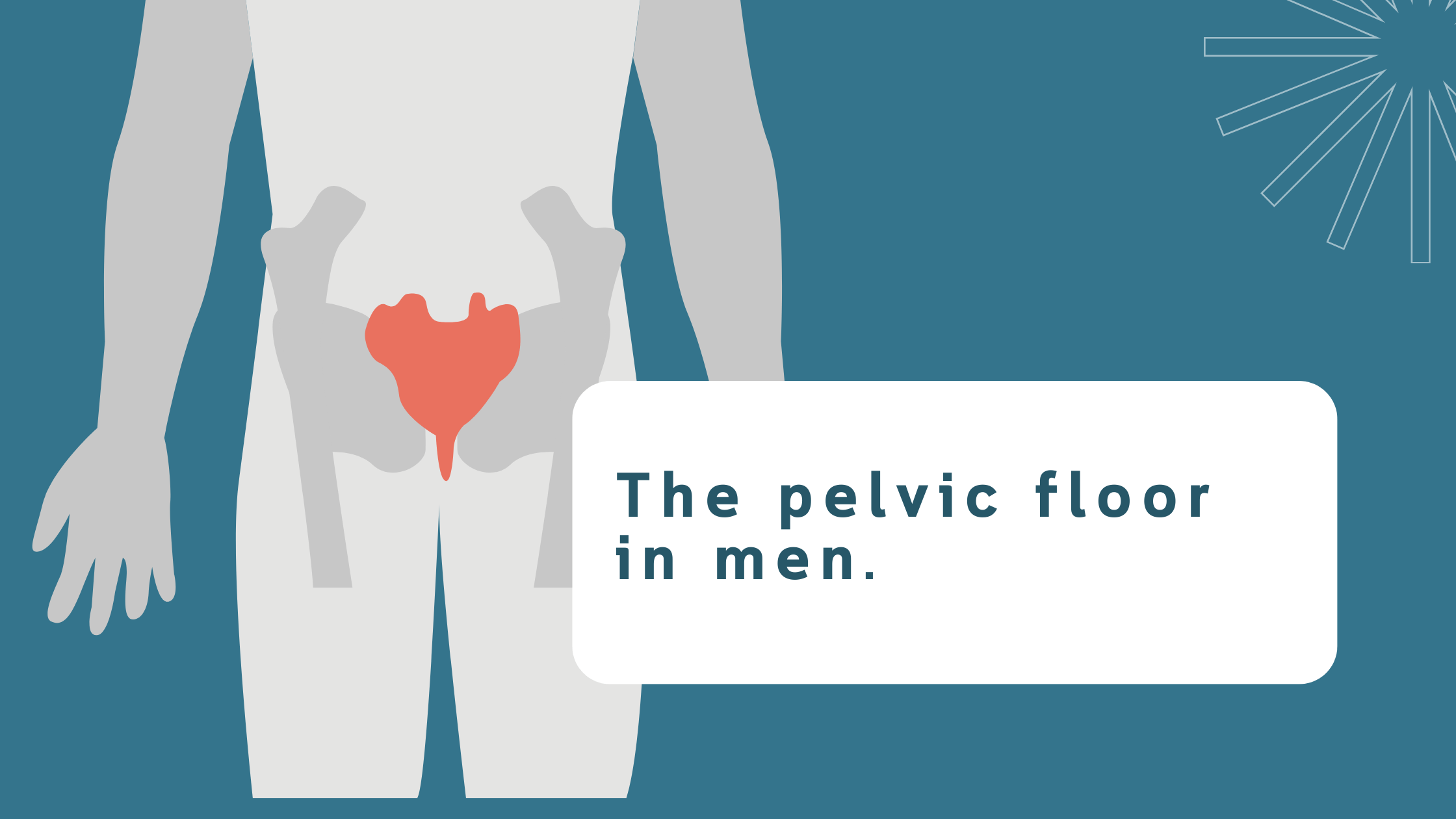The Pelvic Floor in men - yes they have one too!
I recently started teaching Pilates to my beautiful client’s husband and their friends.
As is my habit when teaching Pilates, I started telling the men about their pelvic floor, where it is, and why it is so crucial to strengthen.
There is always so much info for women to strengthen their pelvic floor, especially after pregnancy and also as we age.
The truth is, if we are not taught or told about our pelvic floor, how can we know how to strengthen it.
In a previous blog, I discussed the pelvic floor in women, if you missed it, you can read it here. Now it is the men’s turn, as I am sure we all have either a father, husband, partner, or brother that this could benefit.
So what are the pelvic floor muscles?
The National Continence Program describes the pelvic floor muscles as ‘a group of muscles that stretch like a hammock from the pubic bone at the front, to the coccyx (tailbone) at the back and from one ischial tuberosity (sitting bone) to the other (side to side).
A man’s pelvic floor muscles support his bladder and bowel. The urethra (urine tube) and the anus (back passage) pass through the pelvic floor.
These muscles wrap firmly around these passages to help keep them shut.
When the pelvic floor muscles are strong they help prevent the leaking of urine (wee) and faeces (poo). The pelvic floor muscles also help with sexual sensation and function.
What are the pelvic floor muscles?
According to the Continence Foundation of Australia, ‘The pelvic floor muscles give you the ability to control the release of urine, faeces, and flatus (wind) and to delay emptying until it is convenient.
When you contract the pelvic floor muscles, they lift the internal organs of the pelvis and tighten the openings of the anus and urethra. Relaxing the pelvic floor allows the passing of urine and faeces’.
Weakened the pelvic floor cannot fully support your internal organs and you may have difficulty controlling your bladder and other organs.
Continence Foundation of Australia compares the pelvic floor muscle to that of "a muscular trampoline from the coccyx to the pubic bone (front to back) and from one sitting bone to the other sitting bone (side to side.
Imagine the pelvic floor muscles are a round mini-trampoline or hammock made of a firm muscle. Just like a trampoline or hammock, the pelvic floor is able to move down and up. The bladder, uterus, and bowel lie on the pelvic floor muscle layer.
Although the pelvic floor is hidden from view, it can be consciously controlled and therefore trained, much like our arms, legs, or abdominal muscles.
What causes the pelvic floor muscles to weaken?
Constipation
Picking up heavy objects without connecting the pelvic floor muscles first.
Chronic coughing
Being overweight
surgery for bladder or bowel problems
ageing
What can be done about it? Is there hope? Absolutely! Continence Foundation of Australia states that
‘In almost all cases, weakened pelvic floor muscles can be strengthened with pelvic floor muscle exercise”.
What are the benefits of strengthening the pelvic floor muscles?
Exercising the pelvic floor will improve symptoms of accidental leaking when coughing, sneezing or laughing or having an urgent need to urinate more often.
How to find your pelvic floor muscles?
An easy way of finding the pelvic floor muscle is to practice when you are urinating. This can be done either while sitting on the toilet seat or standing.
Try to stop or slow the flow of urine while emptying the bladder. Continence Foundation of Australia suggests that you only do this once a week, or your bladder will not empty all the way.
Another way to try this is by sitting either on a Pilates ball or dining room chair. Sitting on these surfaces helps feel the pressure of the ball or the chair.
Feel like you are drawing your muscles of your back passage/anus up inside you, closing the ring of your butt (back passage/anus) as if you don’t want to pass gas/wind.
Hold for 3-5 or 8 seconds and then gently feel them relax. Try ands and relax your leg, abs, and butt muscles. You don’t want these muscles to take over.
Try again. You should feel a distinct ‘squeeze and lift up’ of the pelvic floor muscles’ for 3, 5 or 8 counts, repeat and build up to holding for 8 counts and repeat three times.
Breath naturally, don’t hold your breath.
If you need a greater understanding of how to do this, watch this helpful video which shows the muscles very clearly and how to execute the exercise:
Although the pelvic floor is hidden from view, it can be consciously controlled and therefore trained, much like our arm, leg or abdominal muscles.
If you are still struggling, don’t struggle alone. Reach out.
‘The exercises described above are only a guide and may not help if done incorrectly or if the training is inappropriate. Talk to your doctor, men's pelvic health physiotherapist, or contact the National Continence Helpline on 1800 33 00 66 for further advice.
You can search for a list of men's pelvic health physiotherapists on the Australian Physiotherapy Association website and on our service provider directory.’



